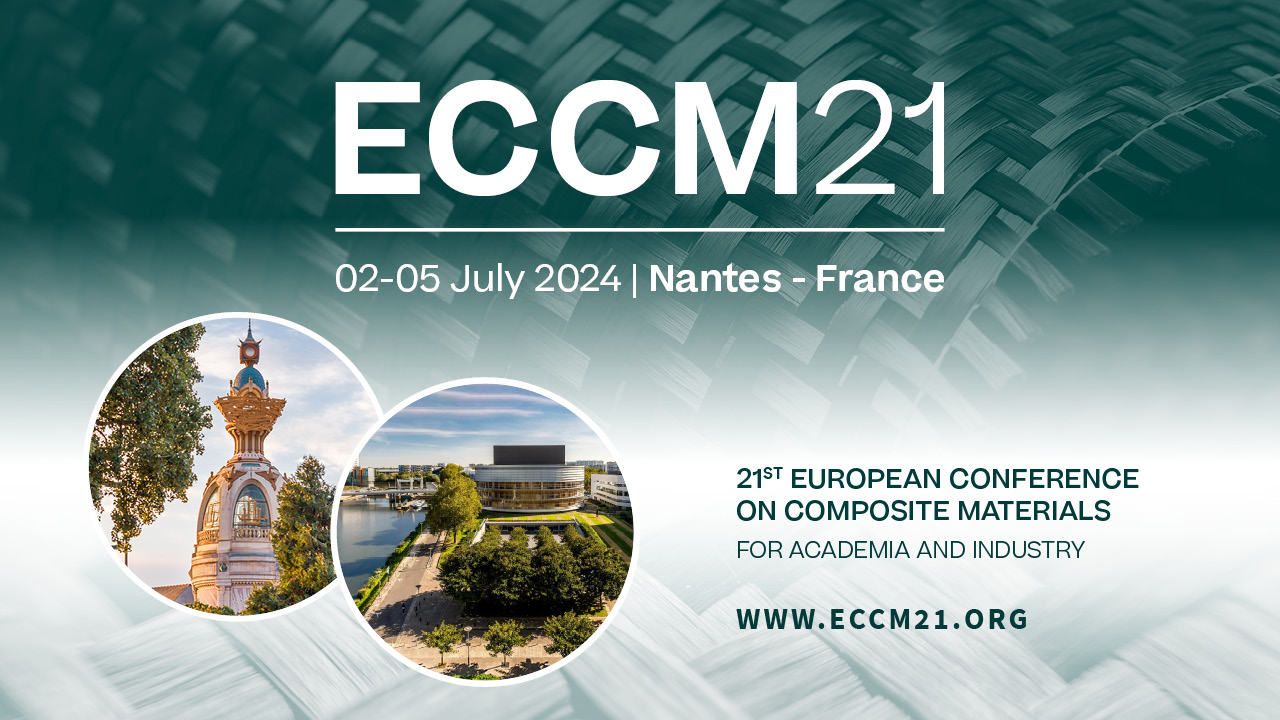Instrumented thermo-mechanical test on oxyde/oxyde composite
Topic(s) : Experimental techniques
Co-authors :
Emilie PERRET (FRANCE), Stephanie MIOT (FRANCE), François GUILLET (FRANCE), Charlotte PIQUET (FRANCE), Céline APHECEIXBORDEAbstract :
Ceramic Matrix Composites (CMC) are known for their resistance to high temperature (HT) combined with good mechanical properties. The work presented here focuses on materials that can sustain a loading at temperature ranging from 600°C to 1000°C such as Oxyde/Oxyde and Oxyde/Geopolymer. An analysis of the failure of various specimens has been performed in order to identify the failure modes, evaluate the material strength and build a finite element (FE) model that will be used to design new structures. In particular, L-shape specimens were designed, manufactured, tested and analysed. The specimens were made of Oxyde/Geopolymer (PyroXide), a material developed and commercialised by Pyromeral. The L-shape specimens are reinforced as shown in Figure 1. A test was designed so that the resistance of the bond between the L-shape and the reinforcement can be assessed. It consisted of applying a load that tended to fold the specimen. Shear stress was generated at the bond between the two parts of the sample. The arms were loaded in bending. This complex loading allowed multiple stress states to be generated in the specimen. The most critical areas could then be identified.
First, specimens were tested at room temperature on a MTS tensile test machine. The specimens were then tested on the same test machine with the addition of a flame generating a thermal gradient. The hottest region was around 1000°C and the flame position varied between test campaigns. Figure 2 shows the test setting with the flame and the instrumentation. Infrared (IR) Cameras were used to measure the temperature and displacement fields. A pyrometer was added to confirm the temperature measurement obtained with the IR cameras. Digital Image Correlation (DIC) was also used to identify the first failure mode as it allows for discontinuities – so cracks – to be highlighted. Different failure modes and locations were observed during the various tests. The failure was strongly influenced by the thermal load which could lead to premature fibre failure. Further analysis of the test results is currently in progress and a FE model is being created to complement this experimental study and provide comprehensive information about the failure mode and location. Additional characterisation tests of the material at high temperature should be considered to fully describe the thermomechanical response of the specimen. The objective is then to improve the design of the L-shape specimen and increase the applied load.
First, specimens were tested at room temperature on a MTS tensile test machine. The specimens were then tested on the same test machine with the addition of a flame generating a thermal gradient. The hottest region was around 1000°C and the flame position varied between test campaigns. Figure 2 shows the test setting with the flame and the instrumentation. Infrared (IR) Cameras were used to measure the temperature and displacement fields. A pyrometer was added to confirm the temperature measurement obtained with the IR cameras. Digital Image Correlation (DIC) was also used to identify the first failure mode as it allows for discontinuities – so cracks – to be highlighted. Different failure modes and locations were observed during the various tests. The failure was strongly influenced by the thermal load which could lead to premature fibre failure. Further analysis of the test results is currently in progress and a FE model is being created to complement this experimental study and provide comprehensive information about the failure mode and location. Additional characterisation tests of the material at high temperature should be considered to fully describe the thermomechanical response of the specimen. The objective is then to improve the design of the L-shape specimen and increase the applied load.

